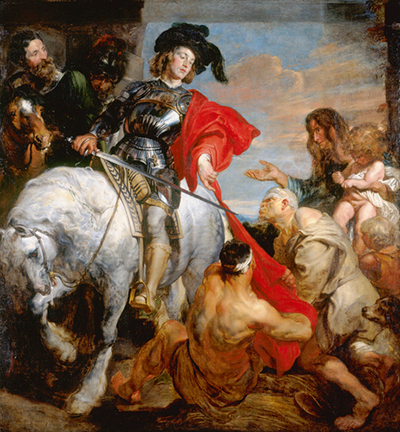Saint Martin of Tours gifts his own cloak to a beggar in this symbolic painting by Anthony van Dyck
The artist produced two very similar versions of this theme, one in 1618 and one in 1620. The later painting can now be found in the Royal Collection, which holds a great selection of Van Dyck paintings. The later version was found in the studio of Peter Paul Rubens in 1621, several years after his young pupil has left in order to travel across Europe and expand his artistic influences.
When you browse either of these paintings it is easy to understand why Van Dyck felt the need to travel abroad. The style oozes the influence of Rubens and perhaps Anthony was concerned that be staying in his studio he would lose his own identity as an artist and waste some of his undoubted talent.
The story behind this painting is that on a cold winter's morning Martin of Tours would slice his military cloak in two, enabling him to give half to a cold, desperate beggar who is seen reaching out for help. The star of the show wears a plumed hat in the painting, when normally he would be depicted in entirely military uniform. The purpose of that is to make him look more friendly and accessible, more human.
Both of these two versions were used within Rubens' studio for others to study and produce their own copies of. There was a great feeling of collaboration and co-operation with this extended studio, where the skills of these great masters would be handed down through one-on-one tutoring and a more general mixing of ideas between the students themselves. Many artists that came through this process would have supreme artistic skills but perhaps lack the imagination and flair to be able to leave a legacy of their own.




